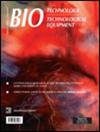TLR4信号以MAPK1/ERK2依赖的方式通过重编程炎性体和自噬途径保护支持细胞免受细胞应激
IF 1.4
4区 生物学
Q4 BIOTECHNOLOGY & APPLIED MICROBIOLOGY
引用次数: 0
摘要
在激素、生长因子和细胞因子的控制下,支持细胞通过不可穿透的紧密连接维持着精原干细胞生态位和血睾丸屏障。未成熟的支持细胞增殖和存活受益于FSH、NF-κB和il -1α依赖的信号,这些信号通过MAPK家族途径有效,并与p38 MAPK依赖的Ca2+和K+通量相关。关于NF-κB和MAPK轴如何与促炎NOD1/TLR4和不同电压门控通道相互作用,我们知之甚少。通过沉默MAPK1,我们发现MAPK1/ERK2与TLR4具有协同作用,可以抑制促炎的NF-κB/Caspase-1/IL-1β轴,而对TLR4具有拮抗作用,可以促进成人15p -1支持细胞系的增殖和迁移。在MAPK1/ERK2缺失的情况下,出现了意想不到的TLR4-NF-κB行为,显示出强烈的NF-κB转激活,使用pNIFTY-SEAP报告质粒进行评估,并伴随着显著激活的细胞迁移和增殖,如伤口愈合试验所示。在ATP DAMP信号存在的情况下,TLR4和NOD1激活后,电压门控钾通量(最有可能通过Kv1.3)显著增加,与炎症小体激活有关。TLR4挑战也激活了巨噬,同时抑制了有丝分裂。因此,TLR4的激活限制了NF-κB和Caspase-1/IL-1β促炎轴、细胞迁移和增殖、电压门控钾外溢,并将有丝分裂转变为巨噬(向炎性小体途径相关的细胞死亡方向发展),促进细胞存活。MAPK1/ERK2具有不同的作用,因为在其缺失的情况下,TLR4的激活对NF-κB的反激活和细胞迁移和增殖具有相反的作用。因此,TLR4/MAPK1/NF-κB/Kv1.3相互作用提供了最佳的支持细胞维持条件,并且仅在累积的DAMP/PAMP信号刺激的极端情况下才允许细胞死亡。本文章由计算机程序翻译,如有差异,请以英文原文为准。
TLR4 signalling protects Sertoli cells from cell stress via reprogramming inflammasome and autophagy pathways in MAPK1/ERK2 dependent way
Sertoli cells constitutively maintain the spermatogonial stem cell niche and blood-testis barrier via impenetrable tight junctions under hormonal, growth factor and cytokine control. Immature Sertoli cell proliferation and survival benefit from FSH, NF-κB, and IL-1α-dependent signalling effective via the MAPK family of pathways and related to p38 MAPK dependent Ca2+ and K+ fluxes. Little is known about how the NF-κB and MAPK axis interact with pro-inflammatory NOD1/TLR4 and different voltage-gated channels. Silencing MAPK1, we found that MAPK1/ERK2 has a synergistic role with TLR4 in restricting the pro-inflammatory NF-κB/Caspase-1/IL-1β axis while having an antagonistic effect on TLR4 in promoting adult 15 P-1 Sertoli cell line proliferation and migration. In MAPK1/ERK2 absence, there was an unexpected TLR4-NF-κB behaviour, showing a strong NF-κB transactivation, assessed using a pNIFTY-SEAP reporter plasmid, accompanied by significantly activated cell migration and proliferation, as demonstrated by the wound healing assay. Voltage-gated potassium flux, most likely via Kv1.3, was significantly increased after TLR4 and NOD1 challenge in ATP DAMP signal presence, associated with inflammasome activation. TLR4 challenge also activated macroautophagy while inhibiting mitophagy. Thus, TLR4 activation restricted the NF-κB and Caspase-1/IL-1β pro-inflammatory axis, cell migration and proliferation, voltage-gated potassium efflux, and shifted mitophagy to macroautophagy (towards an inflammasome pathway-related cell death), promoting cell survival. MAPK1/ERK2 had a differential effect, as in its absence, TLR4 activation had the opposite effect on NF-κB transactivation and cell migration and proliferation. Thus, TLR4/MAPK1/NF-κB/Kv1.3 interaction provides optimal Sertoli cell maintenance conditions and allows cell death only in extreme circumstances of cumulative DAMP/PAMP signalling stimulation.
求助全文
通过发布文献求助,成功后即可免费获取论文全文。
去求助
来源期刊

Biotechnology & Biotechnological Equipment
工程技术-生物工程与应用微生物
CiteScore
3.10
自引率
0.00%
发文量
90
审稿时长
1 months
期刊介绍:
Biotechnology & Biotechnological Equipment (B&BE) is an international open access journal publishing cutting-edge research. A modern world requires modern biotechnology and nanobiology. The journal is a forum that provides society with valuable information for a healthy and better life and promotes “the Science and Culture of Nature”.
The journal publishes original research and reviews with a multidisciplinary perspective; expanded case reports with a focus on molecular medical research and advanced practice in evidence-based medicine are also considered.
 求助内容:
求助内容: 应助结果提醒方式:
应助结果提醒方式:


